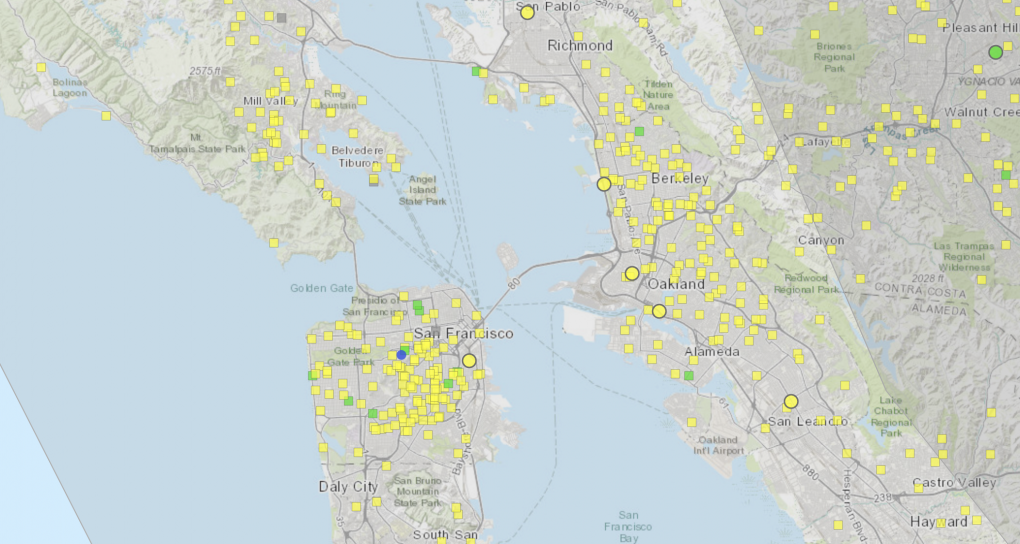Bay Area residents have become used to the ritual of checking online maps for local air quality amid burning forests and chaparral near and far.
During the 2018 Camp Fire, AirNow, an air quality website maintained by a partnership of states, the federal government, Canada and Mexico, crashed because it could not handle so many people flocking online to put numbers to what their noses were telling them: The air seemed really bad.
The failure sent web users rushing to alternative, unofficial websites like the interactive, crowdsourced map maintained by PurpleAir, a manufacturer of low-cost air monitors.
But users have noticed a discrepancy between what official sites are reporting and the readings displayed on PurpleAir.
So, what’s the deal?
Broadly put, PurpleAir provides more localized, more current and less accurate readings than AirNow.
The EPA and the U.S. Forest Service have a project of what some may consider to be the Holy Grail of air quality maps: combined readings taken from PurpleAir’s low-cost sensors and those from official government monitoring devices, all in a single map. Click here or on the image below to access the map; the circles represent official government monitors, the squares indicate PurpleAir sensors, and the triangles show temporary monitors set up by government agencies.

“While these [unofficial] sensors don’t meet the rigorous standards required for regulatory monitors, they can help you get a picture of air quality nearest you, especially when wildfire smoke is in your area,” the website states.
PurpleAir readings and those from government sensors like the ones maintained by the Bay Area Air Quality Management District differ in several key ways: speed, accuracy and placement.